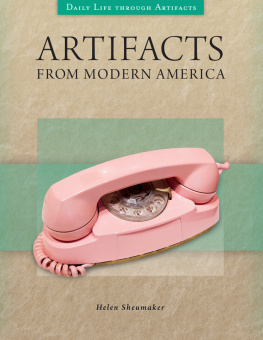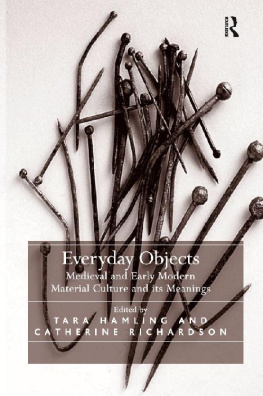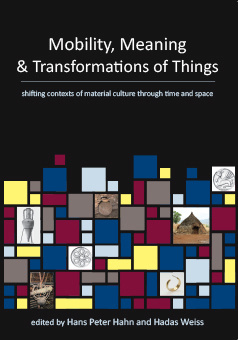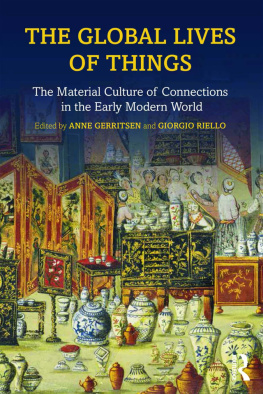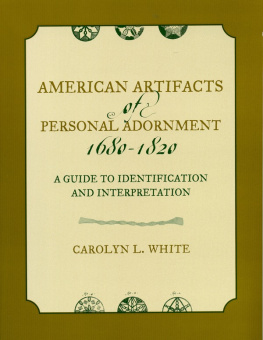ARTIFACTS
FROM MODERN AMERICA
Recent Titles in
Daily Life through Artifacts
Artifacts from Ancient Rome
James B. Tschen-Emmons
Artifacts from Medieval Europe
James B. Tschen-Emmons
Artifacts from Ancient Egypt
Barbara Mendoza
ARTIFACTS
FROM MODERN AMERICA
Helen Sheumaker
Daily Life through Artifacts

Copyright 2018 by ABC-CLIO, LLC
All rights reserved. No part of this publication may be reproduced, stored in a retrieval system, or transmitted, in any form or by any means, electronic, mechanical, photocopying, recording, or otherwise, except for the inclusion of brief quotations in a review, without prior permission in writing from the publisher.
Library of Congress Cataloging-in-Publication Data
Names: Sheumaker, Helen, author.
Title: Artifacts from modern America / Helen Sheumaker.
Description: Santa Barbara, California : Greenwood, an imprint of ABC-CLIO, LLC, 2017. | Series: Daily life through artifacts | Includes bibliographical references and index.
Identifiers: LCCN 2017022376 (print) | LCCN 2017044521 (ebook) | ISBN 9781440846830 (ebook) | ISBN 9781440846823 (alk. paper)
Subjects: LCSH: United StatesSocial life and customs20th century. | Material cultureUnited StatesHistory20th century. | United StatesCivilization1945- | United StatesCivilization1918-1945. | Popular cultureUnited StatesHistory20th century.
Classification: LCC E161 (ebook) | LCC E161 .S46 2017 (print) | DDC 973.9dc23
LC record available at https://lccn.loc.gov/2017022376
ISBN: 978-1-4408-4682-3 (print)
978-1-4408-4683-0 (ebook)
22 21 20 19 18 1 2 3 4 5
This book is also available as an eBook.
Greenwood
An Imprint of ABC-CLIO, LLC
ABC-CLIO, LLC
130 Cremona Drive, P.O. Box 1911
Santa Barbara, California 93116-1911
www.abc-clio.com
This book is printed on acid-free paper 
Manufactured in the United States of America
CONTENTS
PREFACE
It is a material world that we humans live in. It may feel as though Americans became more materialistic. The bold declaration by pop singer Madonna (born Madonna Louise Ciccone, 1958) that she was just a material girl in 1984 seemingly epitomized a 20th-century American superficiality. Humans have always lived in a material worldthat is, a world made up of human-made objects. The American 20th century was unique in several ways: the mastery of mass production led to an escalation in the number of things people owned and needed to have to conduct daily life, the development of media and advertising fundamentally restructured daily life by inundating people with images of material things, and the economic improvements in the lives of American residents meant that more and more, citizenship equaled owning stuff. Despite all of these factors, though, life in 20th-century America was remarkably similar to life in the preceding two centuries of Euro-American life, with material objects used to enable communications, daily hygiene, and other consistent aspects of daily life.
The artifacts of daily life range from things used constantly until no longer usable to objects that represent major changes in the lives of residents of the United States. A portable radio made in Japan can coexist in a 1950s household that also owns the wholly American-made Fordson tractor. The radio, built on technology developed by Italians, Americans, and others around the world, fundamentally changed how Americans experienced daily life. The Fordson tractor, developed and manufactured in the United States and sometimes exported to other countries, changed farmers lives. Its impact was enormous not only in economic growth and food production but also in the approach to design that the Fordson tractor embodied.
Sometimes the artifacts selected for this volume were invented or first manufactured in the later decades of the 19th century, sometimes objects were made in other parts of the world, and some objects are deeply intimate and personal, while others are symbolic and national in message. The 20th century in the United States was shaped by institutionalized power such as dominant corporations, the privileging of certain groups over others (such as male prerogative over women and the rights of white Americans over those of African descent, of the heterosexual population over homosexual individuals, and of the fully abled population over individuals with disabilities). But the country entered the second half of the century with an enormous change in civil rights for African Americans and people of color, Americans with disabilities, womens rights, and gay rights that fundamentally restructured American society. Some artifacts chosen for this book illustrate the ways American citizenship broadened through the century.
Daily life is homogeneous and heterogeneous. There are vast differences in how Americans live their daily lives; there is no single shared routine, value system, or even material life. But American daily life does have some shared aspects that have allowed Americans and others to define an American way of life: products are advertised to such an extent that nearly all Americans have seen an ad for, say, a major beverage brand, and some types of artifacts are nearly universally present in homes (such as the television) or daily experience (such as cellophane and all forms of product packaging). Some artifacts are by design limited in their use (such as the contraceptive pill for women) but represent a widespread need and cultural impact tied to much broader social changes (womens ability to control reproduction is tied to a rise in economic benefit for men, women, and children; womens paid employment; and higher levels of education for children). Nearly all the objects selected for this book are manufactured products created for consumption; the importance of the market to defining an American way of life is overwhelming.
Some examples, such as the Pullman railroad car, were selected for their multivalent significance. Railroad transportation was vital to 20th-century American economic life, but the Pullman car system, with its reliance on African American men as porters, led to the development of the single most powerful black workers union. Thus, the Pullman car tells a story about nationalized transportation, corporate power, labor unions, and African American civil rights. This book tells the story of the 20th century in the United States through the objects that formed the texture of everyday life on intimate and public levels.
Artifacts from Modern America examines 48 objects and is organized into 10 sections. These sections are arranged not chronologically but instead alphabetically by thematic categories. The categories are:
Communications
Cooking, Food, and Drink
Entertainment
Grooming, Clothing, and Accessories
Health and Medicine
Household Items
Political and Civic Life
Religion
Tools and Weapons
Transportation
Most objects discussed in this book remain in use; very few were short-lived in their utility. For most readers there will be some surprises, but nearly all of the artifacts are recognizable and familiar from readers daily experiences in the 21st century. Many artifacts that dominated the 20th century had their roots in the 19th century, especially the 1890s when American innovation was at a peak, an international system of competitive worlds fairs (often but not always hosted by major cities in the United States), and consolidation of corporate power led to the development of products that by the early 21st century seem to have always been a part of daily life.
Next page
